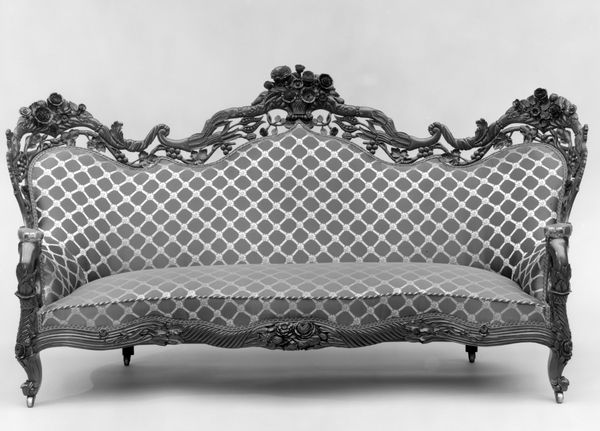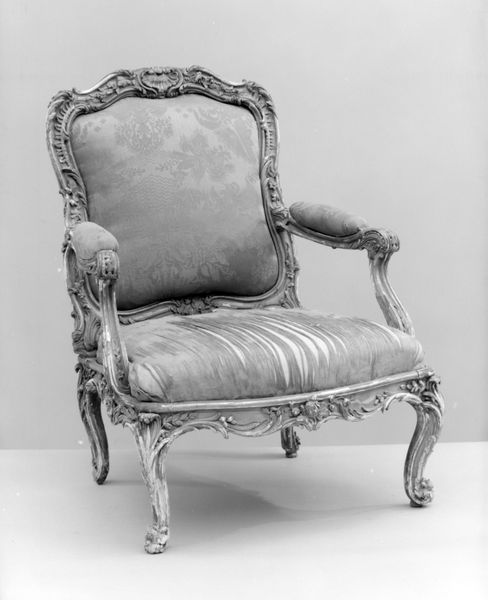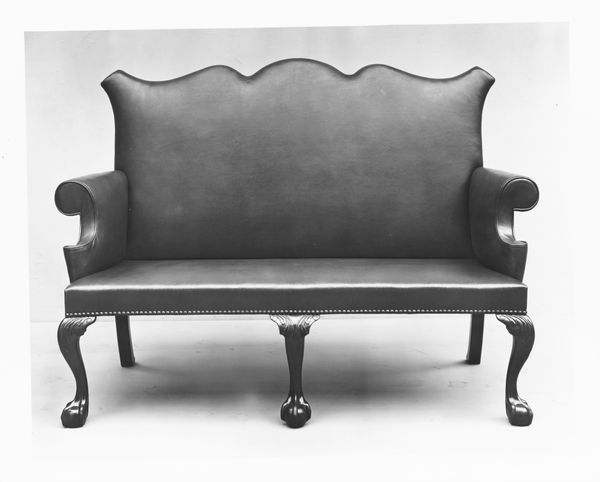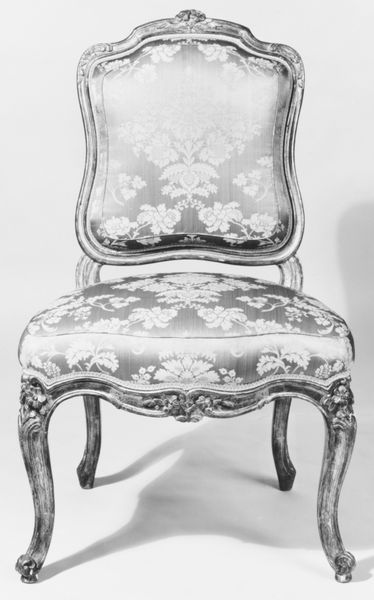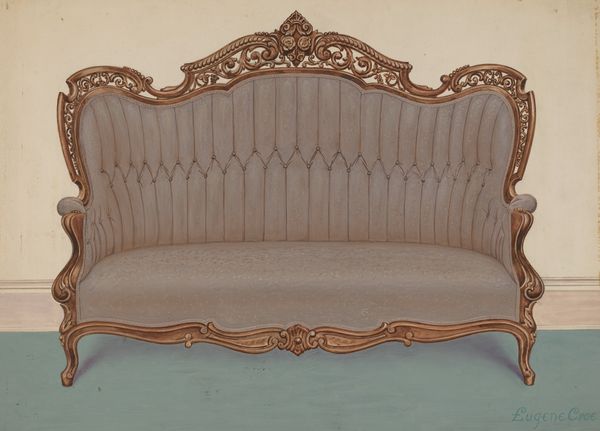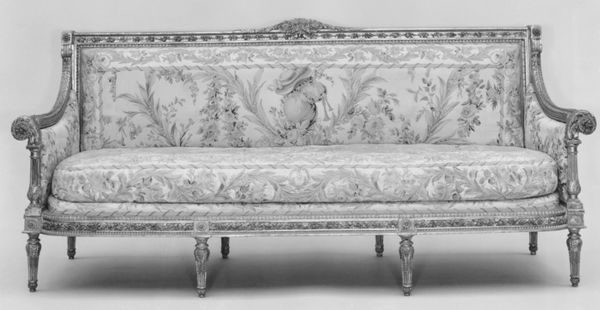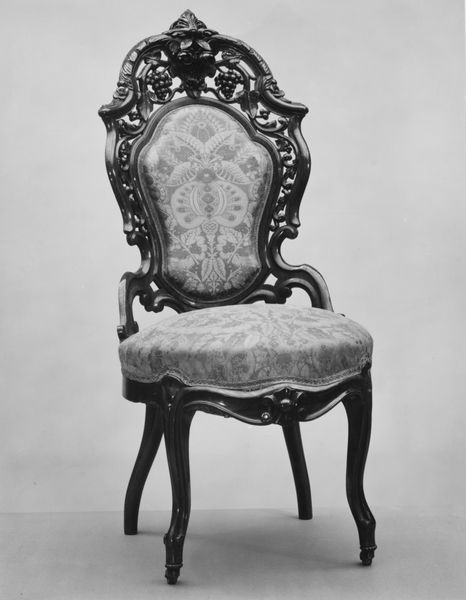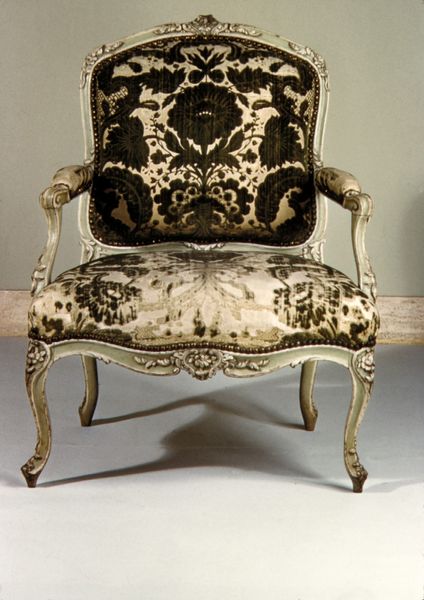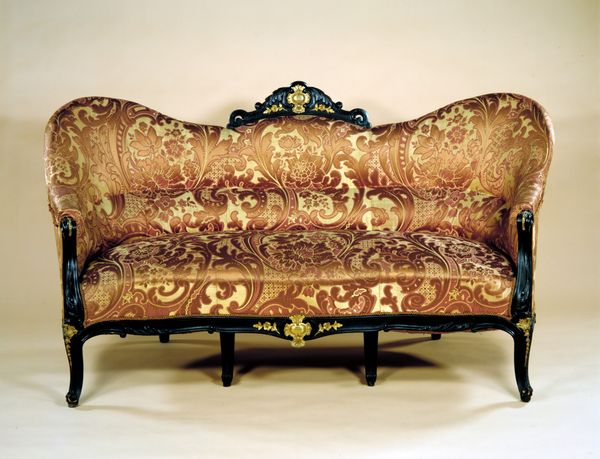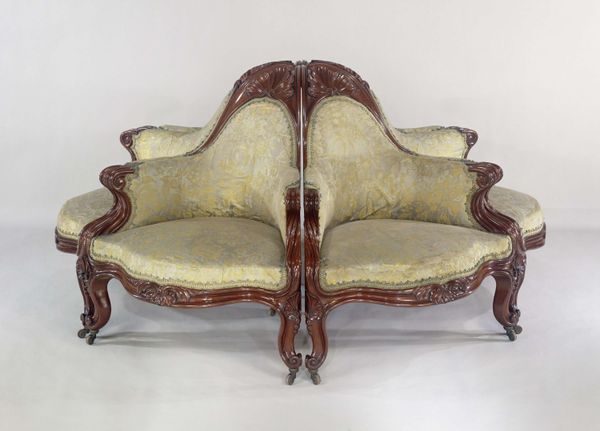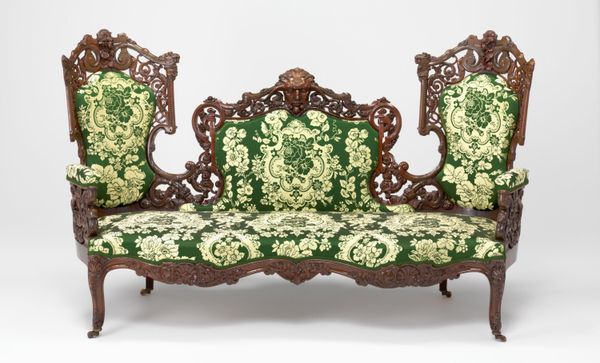
Dimensions: 127.6 × 168.9 × 95.3 cm (50 1/4 × 66 1/2 × 37 1/2 in.)
Copyright: Public Domain
Editor: This ornate sofa, crafted by J. & J.W. Meeks between 1856 and 1865, is currently housed at the Art Institute of Chicago. The baroque style is really striking and kind of…intense. With its carved wood and button-tufted upholstery, what design aspects stand out to you the most? Curator: Let’s consider the interplay between line and mass. The curvilinear form of the wooden frame provides a counterpoint to the relative planar surface of the seat and back. What effect do you think the difference between line and plane in terms of these components contributes to this work? Editor: It’s almost like a drawing of a sofa realized in three dimensions, where the lines give it a dramatic and decorative flare that almost overwhelms the plush interior. The hard edges are balanced with soft textures and lines. So you’re saying that this relationship contributes to an overall harmony between seemingly disparate aspects of a functional object? Curator: Precisely. Also consider how the repetitive buttons on the upholstered back form their own grid against which the curves can play. But what happens when the curvature *repeats* at the edge of the frame? This layering of curvature and repetition adds considerable complexity. How might we decode the semiotics of such density, especially given its practical, material function? Editor: Wow, I hadn’t considered it in such formal terms, but this detailed view has really altered how I view decorative art. At first, I considered the visual weight between forms as distinct aspects, but thinking about the lines against the plains as *elements* adds a depth to its complexity. Curator: Indeed. Understanding the elements composing an artwork enables more informed responses to even its more emotive aspects.
Comments
No comments
Be the first to comment and join the conversation on the ultimate creative platform.

